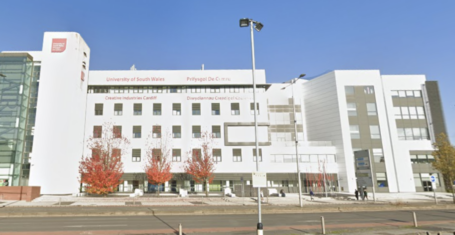
These are the Russell Group unis with the highest ethnicity pay gaps
UCU’s Jo Grady said: ‘Universities are sites of mass inequality’
York is the Russell Group university with the highest average* ethnicity pay gap, followed by Birmingham and Warwick.
“Universities are sites of mass inequality and there are huge pay gaps when it comes to race, gender and disability”, UCU general secretary Jo Grady told the Mail.
Several Russell Group universities – Leeds, LSE, Oxford, Queen’s Belfast, Sheffield – either do not publish or do not have up-to-date publicly available median ethnicity pay gap data. Universities (and all large companies) have to publish their gender pay gap statistics every year, but are not required to publish their ethnicity pay gaps – although many choose to do so.
Ethnicity pay gaps don’t mean white people and those from other ethnic groups are paid differently to do the exact same jobs, instead they show “the difference in the average pay between staff from ethnic minority backgrounds in a workforce, compared to ‘white’ staff”, according to the government website. This means pay differences between different ethnic groups are usually due to other factors that “impose a disadvantage on people from ethnic minority backgrounds”.
These are the Russell Group universities with the highest ethnicity pay gaps:
York – 18.6 per cent
Last year, a University of York spokesperson said to The Tab about its pay gap: “As a community we have a firm commitment to addressing racial inequality and have chosen to report on our ethnicity pay gap to acknowledge where we need to make progress, and hold ourselves accountable for bringing about the changes we need to make. This initial data report on our pay gap provides a baseline against which we can and must challenge and measure ourselves.”
Most Read
It has a number of initiatives, including working with fellow Russell Group unis Sheffield and Leeds universities in a pilot scheme to increase diversity in senior posts, York Press reports.
Birmingham – 15.2 per cent
A spokesperson for Birmingham told the Mail the pay gap was not about “different rates of pay for the same job”, and said the university is prioritising addressing the issue of workplace imbalance “through recruitment and development of minority ethnic staff at all levels.”
Warwick – 13.7 per cent
Warwick said the uni has seen “a doubling of the number of BAME appointments at senior academic levels as well as more staff who declare a disability at such levels. There is still much work to be done and we have introduced several schemes and plans to move the University further forward in this area.”
Queen Mary, London – 13.2 per cent
Queen Mary, Uni of London said: “We do not have equal numbers of staff from different ethnic backgrounds across all our graded job roles. […] To close the overall pay gap we continue to work hard to have equal distribution of staff within the organisation.”
King’s – 12.7 per cent
King’s said: “We were proud that 400 cleaning and security staff chose to become employees of King’s from an outsourced agency in 2019. This contributed to an increase in our ethnicity pay gap and while we are making progress to close it, we acknowledge that we have more work to do.”
Manchester – 9.9 per cent
Manchester said the ethnicity pay gap has been decreasing but there is “more work to be done”. A spokesperson told the Mail: “The main factor contributing to our pay gaps is the under-representation of women, BAME and disabled staff in higher paid jobs and functions, and not as a result of staff being paid differently for work of equal value.”
UCL – 8.5 per cent
UCL’s report on their ethnicity pay gap says: “BAME staff are underrepresented at senior levels which continues to be the overwhelming reason for the ethnicity pay gaps”. It says the uni is committed to addressing both gender and ethnicity pay gaps. “We will continue to embed a series of targeted initiatives to tackle this issue and help promote UCL as an inclusive employer of choice. In particular we will continue to support the career development of women and BAME staff to increase their representation at our highest grades.”
Imperial – 8.2 per cent
Imperial’s website says: “The College has implemented many initiatives over the years to address the broad concept of equal representation at all levels, and we can see this is starting to make a difference.” This includes “recruitment and retention of female and Black and other minority ethnic professors”.
Southampton – 5.7 per cent
Southampton’s most recently published stats on the uni’s ethnicity pay gap are based on figures from 2019. The uni’s website says: “With respect to ethnicity, disability and other protected characteristics we have a clear commitment
to diversity and inclusiveness. The overall picture for equal pay gaps by ethnicity and disability was broadly positive at an institutional level, but inconclusive in some analyses due to small populations. […] To address the challenges this review, and others, are highlighting, we will widen representation and create an inclusive environment.”
Edinburgh – 5.7 per cent
A spokesperson for Edinburgh told the Mail: “The University is committed to ensuring our pay structures and reward processes are free from bias. We acknowledge that more needs to be done to address pay gap challenges.”
Nottingham – 2.2 per cent
Nottingham has committed to a race equality charter to “improve the representation, progression and success of minority ethnic staff and students within higher education”. The uni says: “We are committed to delivering the actions identified in our Race Equality Charter action plan and driving culture and process change institution wide”.
Bristol – 0 per cent
Bristol says its ethnicity pay gap has decreased and the uni says it is developing “targeted and evidence-based approaches to improving the representation of Black, Asian and minority ethnic staff”.
Cambridge – 0 per cent
Cambridge said: “The University is committed to equality of opportunity, and although this year we saw a reduction in the ethnic pay gap, there is more work to be done in addressing the root cause of the pay gap and creating a culture where all can thrive.”
Cardiff – 0 per cent
Cardiff’s website says: “We are committed to equal pay, treatment and opportunity, to supporting diversity and creating an open and inclusive community. […] We are serious about, and committed to, identifying the causes of the pay gap and work to find solutions to address this.”
Liverpool – -1.1 per cent
The negative figures (Liverpool, Newcastle, Glasgow, Exeter, Durham) mean that the average pay for staff from ethnic minority backgrounds is higher than that of white staff.
Liverpool’s website says: “The reasons for the pay gap being so low is that a higher proportion of POC population occupy higher pay grades and job roles, compared to the ‘white’ population.” The uni has a number of initiatives including a “race equality action plan” which looks at “addressing racism and racial harassment”.
Glasgow – -2 per cent
However, Glasgow’s website notes “large data gaps exist” so this may not be accurate. The uni says: “We will achieve our targets by continuing to apply a developmental framework in which all staff have equality in opportunity […] We have a lot to achieve in this sphere, particularly with the inclusion of ethnicity and disability. We are only four years into our Gender Pay Strategy and Action Plan and we continue to strive for positive change without taking for granted past successes.”
Newcastle – -6.6 per cent
Newcastle’s website similarly says there is an “imbalance in representation of colleagues from minoritised ethnic backgrounds across our two major occupational groupings […] the overall ethnicity pay gap is not a meaningful indicator of racial equality in our context”. The uni’s ethnicity pay gap for one group of staff was 14.6 per cent.
Newcastle told the Mail that the figures are less about staff from minority ethnic backgrounds being paid less than their white counterparts, but more about the low numbers of people from minority ethnic backgrounds in top, high-paid roles – which the uni said it is “committed to addressing”.
Exeter – -7.4 per cent
Exeter’s most up-to-date stats are from 2020. The uni’s website says the negative ethnicity pay gap is “likely to be a consequence of the relatively small percentage of BAME staff employed by the university and their uneven distribution across” different pay grades. The ethnicity pay gaps for academic staff is 11.1 per cent and 13.1 per cent for professional services staff.
A spokesperson told the Mail: “Staff within the same grade are paid the same regardless of colour. However, we recognise that BAME staff are underrepresented in senior grades and we continue to invest in a range of actions to support the career progression of people of colour.”
Durham – -7.5 per cent
Like many other unis, Durham is signed up to the Race Equality Charter (REC) which “aims to improve the representation, progression and success of minority ethnic staff and students within higher education”. Last summer it received a bronze REC award and said: “The REC process does not end with this award but is a continuous change process of implementing the REC Action Plan and then monitoring progress and impact.”
*All figures used are median pay gap values
Featured image via as-artmedia/Shutterstock (before edits)
Related stories recommended by this writer:
• Russell Group unis offering free courses to Afghan women until Taliban lifts ban on learning
• Two thirds of students have felt loneliness at uni. These are their stories
• These are the university courses where students drink the most


















